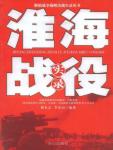Chapter 1 sequence
As we celebrate the 80th anniversary of the birth of the Chinese People's Liberation Army, and today when it is even more necessary to inherit the glorious revolutionary tradition and carry forward the spirit of patriotism and revolutionary heroism, we cannot help but look back at the most representative figures in the People's Liberation War that have contributed to China's historical destiny and future. Strategic battles of decisive significance such as Liaoshen, Huaihai, Pingjin, and crossing the river.
These major battles not only shocked the whole of China and the whole world at that time, but also the shocking war scenes and the heroic spirit of swallowing mountains and rivers are undoubtedly still rare and beneficial teaching materials for people today, and still have great significance. Motivational and educational.
The brief situation of the Huaihai Campaign is as follows: At the end of 1948, in the vast area centered on Xuzhou, starting from Haizhou, Jiangsu in the east, Shangqiu, Henan in the west, Lincheng (now Xuecheng) in Shandong in the north, and Huaihe River in the south, the Kuomintang army had a total of about 80 soldiers. More than 10,000 people adopted the so-called "one point and two fronts" deployment and the tactics of "sticking to one point and rushing to help from all sides" in an attempt to defend the Central Plains, defend Jiangbei, and shield Nanjing and Shanghai.In November of that year, the Central Military Commission of the Communist Party of China decided that the East China and Central Plains Field Armies would coordinate closely to jointly launch the Huaihai Campaign. Liu Bocheng, Chen Yi, Deng Xiaoping, Su Yu, and Tan Zhenlin would form the General Front Enemy Committee, with Deng Xiaoping as the secretary to unify the command of the Huaihai frontline combat operations.At that time, there were more than 600,000 people in the People's Liberation Army and local troops.The campaign is divided into 3 phases. November 6-22 was the first stage of the campaign: the East China Field Army, with the cooperation of the Central Plains Field Army, completed the strategic encirclement of the Xuzhou enemy from all sides, and encircled and wiped out Huang Botao's Seventh Corps in the Nianzhuang area east of Xuzhou.More than 23,000 people from the two armies affiliated to the third "appeasement zone" of the Kuomintang revolted in the Taierzhuang and Zaozhuang areas. From November 23rd to December 15th, it was the second phase of the campaign: the Central Plains Field Army and the East China Field Army encircled and wiped out Huang Weizhi's Twelfth Corps in the Shuangduiji area in the southwest of Suxian County, Anhui Province to reinforce Xuzhou. December 15-January 10, 1949 was the third phase of the campaign: the East China Field Army surrounded the Du Yuming Group, which had withdrawn from Xuzhou and fled to the west, in the Chenguanzhuang area of Yongcheng, Henan. hit.After the people's army on the Pingjin front line completed the division and encirclement of Fu Zuoyi's troops, the East China Field Army launched a general attack on Du Yuming's troops on January 6, and wiped out the two corps of Qiu Qingquan and Li Mi on the 10th, a total of 10 armies.The Huaihai Campaign lasted 66 days, and the People's Liberation Army wiped out more than 555,000 Kuomintang troops, including the Fifth Army and the Eighteenth Army of Chiang Kai-shek's "Five Main Forces".So far, North China and the Central Plains region north of the Yangtze River have basically been liberated, and Nanjing, the center of the Kuomintang's reactionary rule, is under the direct threat of the People's Liberation Army.
This strategic decisive battle has been going on for nearly 60 years. People basically understand the above-mentioned general situation, but they may not be completely clear about those important details and little-known records, such as: Why did the Central Committee of the Communist Party of China Another decisive battle was held in Huaihai. Why didn’t Chiang Kai-shek withdraw the main force of the Central Plains to the south of the Yangtze River? Why did Mao Zedong send an order to wipe out Huang Botao first? It is said that the victory in the Battle of Huaihai was pushed out by the people with small carts, why did the Kuomintang army suffer a crushing defeat...
These details and records may be more meaningful for people to understand the ins and outs of this battle in more detail, to be familiar with the superb wisdom, strategy and command art of our army commander, and to perceive the heroic and tenacious fighting spirit of the People's Liberation Army.That's why this book takes its name, chooses some viewpoints that people may not be familiar with, and makes a comprehensive and detailed description.
This book focuses on explaining the struggle strategies of the Chinese Communist Party and the two parties in this battle, the decision-making of the campaign, and the deployment of troops, especially some details of how the Kuomintang army failed and how the People's Liberation Army won. It is not just a description of some internal secrets that cannot be made public.
The narration of history must respect history, and there must be no falsehood or arbitrariness.Although this book adopts the style of documentary literature, it is based on authoritative historical materials, and the plots and facts are well-founded.To this end, we refer to a large number of relevant military history, war history materials and treatises.Here, we would like to express our heartfelt thanks to the authors of these historical materials (attached).

